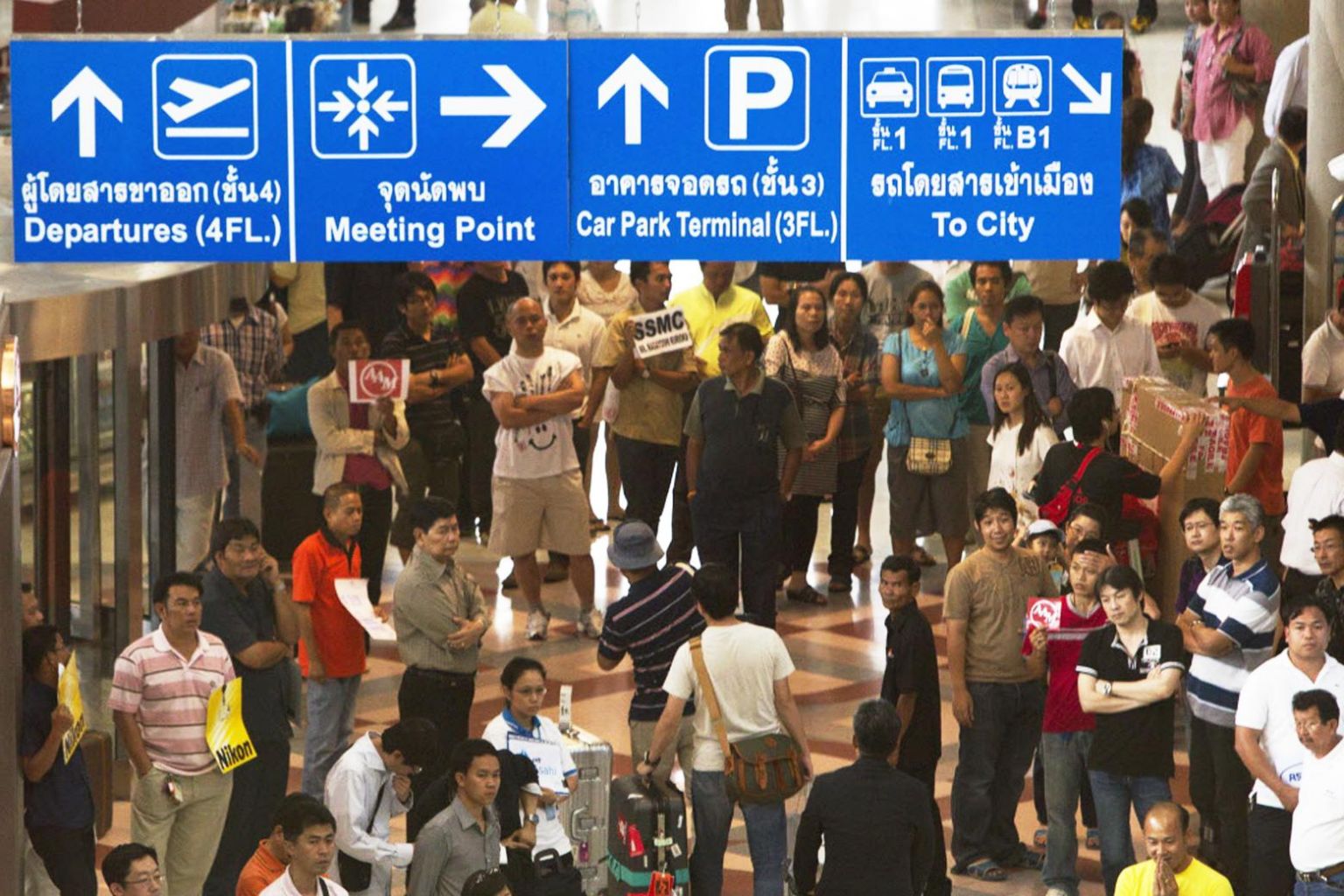Committee approves high-speed rail link connecting three international airports in Thailand
Sign up now: Get ST's newsletters delivered to your inbox

People waiting in an arrival hall at Suvarnabhumi Airport in Bangkok, Thailand.
PHOTO: BLOOMBERG
Follow topic:
BANGKOK - A high-level committee tasked with spearheading a multi-billion-dollar project to expand the economic areas just outside Bangkok has approved a high-speed railway project to connect three interational airports, reported Bangkok Post.
The airports are two airports closest to Bangkok - Don Mueang and Suvarnabhumi airports - and the U-Tapao airport which is located on the east coast of the Gulf of Thailand.
With the approval of the Eastern Economic Corridor (EEC) Committee led by Prime Minister Prayut Chan-o-cha, the 220 km high-speed rail project is now just one step away from a Cabinet decision, unless further adjustments to the plan are needed.
The project is estimated to cost 200 billion baht,reported Bangkok Post on Tuesday (Feb 27).
"This will be the first time Bangkok and Rayong are linked by rail," Mr Kanit Sangsuphan, secretary-general of the EEC office. Rayong is an industrial province to the east of the Thai capital.
The trains will travel at speeds of up to 250kph, meaning people will shuttle between the capital and Rayong in just 60 minutes.
The Thai government expects to attract international bids for the project as soon as next month with a winner picked within the third quarter of this year, Mr Kanit said.
The new rail service connecting the three airports is scheduled to start between 2022 and 2023, he said.
The project will also see the 50-rai Makkasan area in Bangkok developed as a key station of the project.
Fares are expected to start from 270 baht (S$11.40) for a trip from Makkasan to Pattaya in Chon Buri, or 330 baht from Bangkok's Makkasan to U-Tapao airport in Rayong province, reported Bangkok Post.
The EEC committee also assigned the EEC Office to conduct a study on Monday of the second phase of the high-speed railway from U-Tapao Airport to the easternmost province of Trat, Mr Kanit said.
Once the extension is completed, people will be able to travel from Bangkok to the town of Chanthaburi in 100 minutes and Trat near the Thai-Cambodian border in just two hours, he said.
Under the ambitious US$45 billion (S$59.4 billion) EEC development plan, Rayong is one of three provinces on the eastern coast that the government plans to develop into a hub of high-tech industries and modern services.
Thai economic planners envision industrial centres that will turn the area, into the heartbeat of the vibrant Mekong region, which covers Laos, Cambodia, Vietnam and Myanmar.
The EEC is the latest in a series of measures the ruling junta is rolling out to spur investment in the Thai economy, the second largest in South-east Asia.
According to Bangkok Post, the government originally planned to build a high-speed rail system linking Bangkok's Lat Krabang district with Rayong.
But as the EEC scheme grew in importance the project was upgraded to include better transport links between the three airports so as to lure more investors.
The rail project will serve as an extension of the 29km Airport Rail Link that serves commuters from Phaya Thai BTS station in central Bangkok to Suvarnabhumi Airport in Samut Prakan province.
Under the high-speed rail project, a 21km-long route will link Phaya Thai station and Don Mueang airport.
A longer section of the tracks will stretch 170km and run from Suvarnabhumi airport to U-Tapao airport in Rayong province.
"The government included the Airport Rail Link in this high-speed rail project to help cut losses," Mr Kanit said.
SRT Electric Train Co, which operates the Phaya Thai-Suvarnabhumi line, has racked up operating losses totalling 1.78 billion baht, including 280 million baht from last year alone.
The company is also mired in debt due to the 33 billion baht it forked out in construction costs.
Experts predict the new airport linkages will generate an economic return of 700 billion baht, Mr Kanit said.
He was referring to the potential benefits to be gained from the commercial developments along the route, the new jobs to be created, and a decrease in oil consumption and pollution as more people travel by train instead of car or bus.

